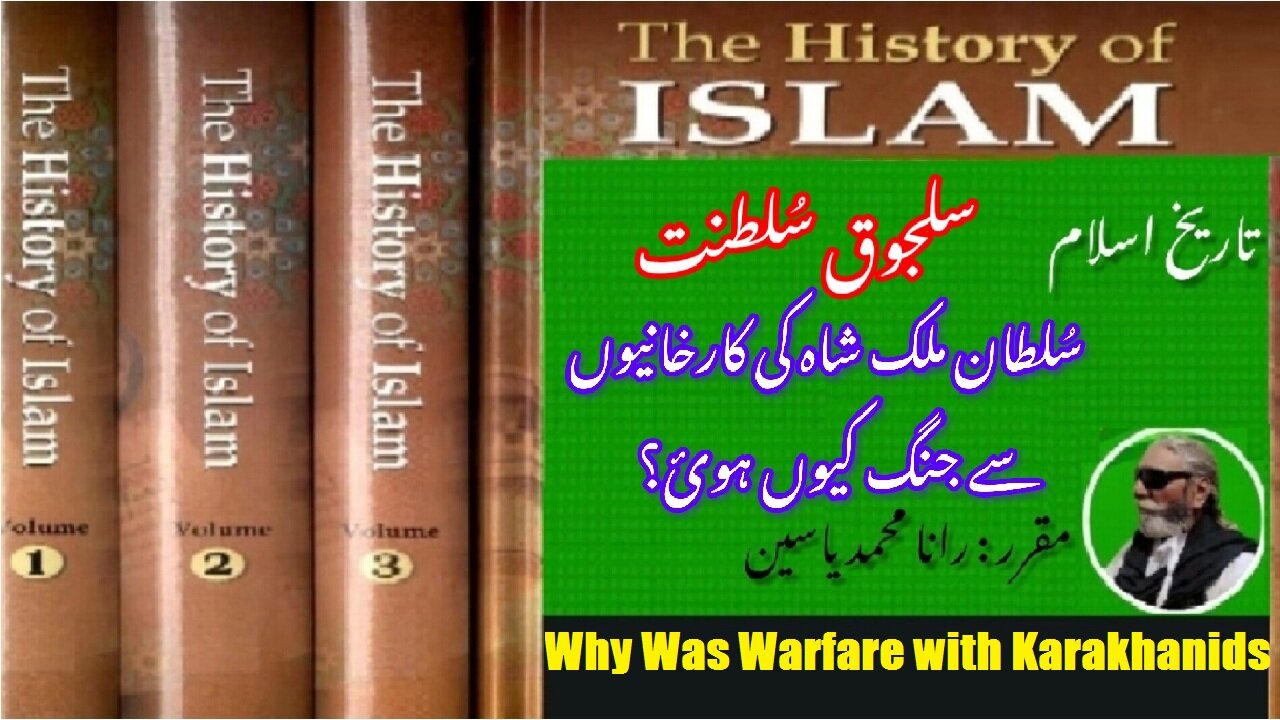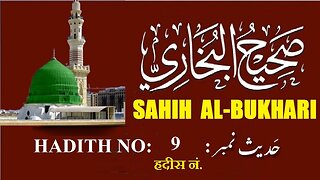Premium Only Content

Why was Warfare with Karakhanids of Sultan Malik-Shah سلطان ملک شاہ کی کارخانیوں سے جنگ
@islamichistory813 #SeljukEmpire #Karakhanids #MedievalHistory
Why was Warfare with Karakhanids of Sultan Malik-Shah
Dekhti Aankhooon aur sountay kaanoon ko Asslamoalaikum, sisters, brothers friends and elders, In this informative video, we are describing the historical context of the warfare between the Seljuk Empire and the Karakhanids during the reign of Sultan Malik-Shah. We are describing the political, economic, and territorial motivations that led to this conflict, describing the strategic decisions made by both sides. Please watch complete video as we describing the complexities of this significant period in medieval history and its impact on the region.
Malik-Shah then turned his attention towards the Karakhanids, who had after the death of Alp-Arslan invaded Tukharistan, which was ruled by Malik-Shah's brother Ayaz, who was unable to repel the Karakhanids and was killed by them. Malik-Shah eventually managed to repel the Karakhanids and captured Tirmidh, giving Sav-Tegin the key of the city. Malik-Shah then appointed his other brother Shihab al-Din Tekish as the ruler of Tukharistan and Balkh. During the same period, the Ghaznavid ruler Ibrahim was seizing Seljuk territory in northern Khorasan, but was defeated by Malik-Shah, who then made peace with the latter and gave his daughter Gawhar Khatun in marriage to Ibrahim's son Mas'ud III.
In 1074, Malik-Shah ordered the Turkic warlord Arghar to restore what he had destroyed during his raids in the territory of the Shirvanshah Fariburz I. During the same year, he appointed Qavurt's son Rukn al-Dawla Sultan-Shah as the ruler of Kerman. One year later, Malik-Shah sent an army under Sav-Tegin to Arran, which was ruled by the Shaddadid ruler Fadlun III. Sav-Tegin managed to easily conquer the region, thus ending Shaddadid rule. Malik-Shah then gave Gorgan to Fadlun III as a fief. Throughout Malik's reign new institutions of learning were established and it was during this time that the Jalali calendar was reformed at the Isfahan observatory. In 1086–87, he led an expedition to capture Edessa, Manbij, Aleppo, Antioch and Latakia. During this expedition, he appointed Aq Sunqur governor of Aleppo and received homage of the Arab emir of Shaizar, Nasir ibn Ali ibn Munquidh. In 1089, Malik-Shah captured Samarkand with the support of the local clergy, and imprisoned its Karakhanid ruler Ahmad Khan ibn Khizr, who was the nephew of Terken Khatun. He then marched to Semirechye, and made the Karakhanid Harun Khan ibn Sulayman, the ruler of Kashgar and Khotan, acknowledge him as his suzerain.
In 1092, Nizam al-Mulk was assassinated near Sihna, on the road to Baghdad, by a man disguised as a Sufi. As the assassin was immediately cut down by Nizam's bodyguard, it became impossible to establish with certainty who had sent him. One theory had it that he was an Assassin, since these assassins regularly made attempts on the lives of Seljuk officials and rulers during the 11th century. Another theory had it that the attack had been instigated by Malik-Shah, who may have grown tired of his overmighty vizier. After Nizam al-Mulk's death, Malik-Shah appointed another Persian named Taj al-Mulk Abu'l Ghana'im as his vizier. Malik-Shah then went to Baghdad and decided to depose al-Muqtadi and sent him the following message: "You must relinquish Baghdad to me, and depart to any land you choose." This was because Malik-Shah wanted to appoint his grandson (or nephew) Ja'far as the new caliph.
The Sultan had a good relationship with the Shias at large except for the Ismailis of Hassan ibn Sabbah. Followers of Sabbah managed to occupy the Alamut fortress near Qazvin, and the army under the command of the emir Arslan-Tash, sent by Malik Shah, could not recapture it. The Sultan's ghilman, Kizil Sarug, besieged the Daru fortress in Kuhistan, but ceased hostilities in connection with the death of Malik Shah on November 19, 1092, possibly due to poisoning.
Malik-Shah died on 19 November 1092 while he was hunting. He was most likely poisoned by the caliph or the supporters of Nizam al-Mulk. Under the orders of Terken Khatun, Malik-Shah's body was taken back to Isfahan, where it was buried in a madrasa.
Upon his death, the Seljuk Empire fell into chaos, as rival successors and regional governors carved up their empire and waged war against each other. The situation within the Seljuk lands was further complicated by the beginning of the First Crusade, which detached large portions of Syria and Palestine from Muslim control in 1098 and 1099. The success of the First Crusade is at least in part attributable to the political confusion which resulted from Malik-Shah's death.
So sisters brothers friends and elders, tomorow we will be described What was Background of Family of Sultan Malikshah. Allah hafiz
===================================
-
 3:07
3:07
ISLAMIC HISTORY
9 hours agoHadith Nabwi Sahih Al-Bukhari Hadith No. 9 صحیح البخاری حدیث نمبر Ilm aur Noor ki Raah
7 -
 DVR
DVR
Bannons War Room
7 months agoWarRoom Live
37.8M8.79K -
 LIVE
LIVE
LFA TV
12 hours agoBREAKING NEWS: SHOOTER IN DALLAS! | WEDNESDAY 9/24/25
4,699 watching -
 1:54:17
1:54:17
Nikko Ortiz
2 hours agoBEST Place To Go During World War 3
17.6K1 -
 LIVE
LIVE
Trumpet Daily
16 minutes agoTrumpet Daily LIVE | Sept. 24, 2025
143 watching -
 UPCOMING
UPCOMING
The Shannon Joy Show
1 hour agoWTF? Technofascist Trump Tells UN He Will Launch A Global AI ID System. Guest: Derrick Broze!
1251 -

Benny Johnson
2 hours agoBREAKING: Left-Wing Terrorist Attack at ICE Facility, Sniper Opens Fire | Kimmel Sobs in Non-Apology
43K55 -
 LIVE
LIVE
The Big Mig™
3 hours agoTrump, Chuck Schumer & Hakeem Jeffries Can Go Pound Sand!
6,111 watching -
 1:09:27
1:09:27
The Kevin Trudeau Show Limitless
2 hours agoHow Energy, Mindset, And Marketing Really Work: Kevin Trudeau Reveals All!
5.9K1 -
 1:35:46
1:35:46
Dear America
3 hours agoGoogle ADMITS CENSORING Under Biden!! WE WERE RIGHT!! + The UN Sabotaged Trump!!
118K63